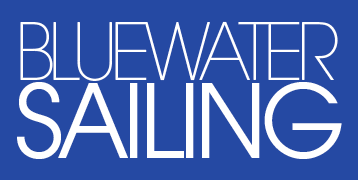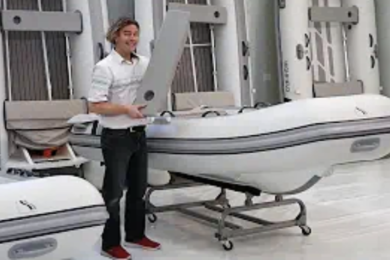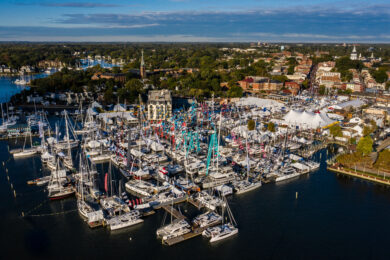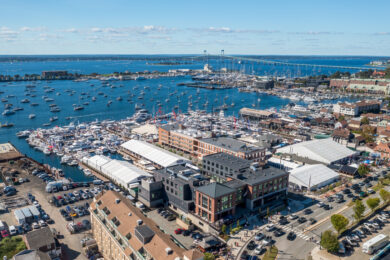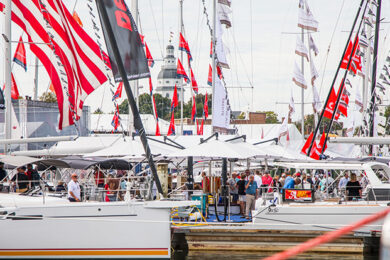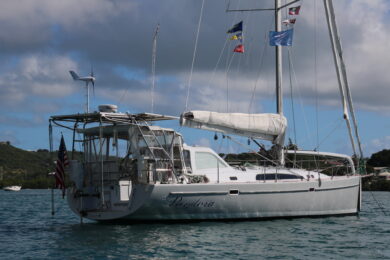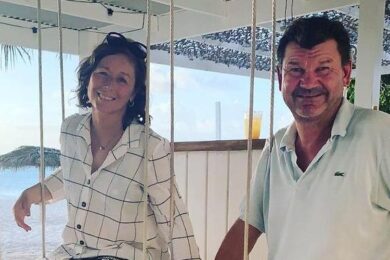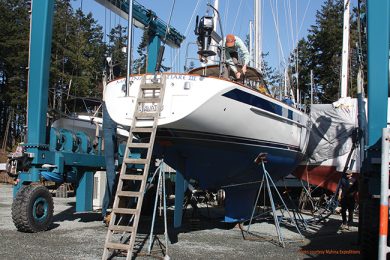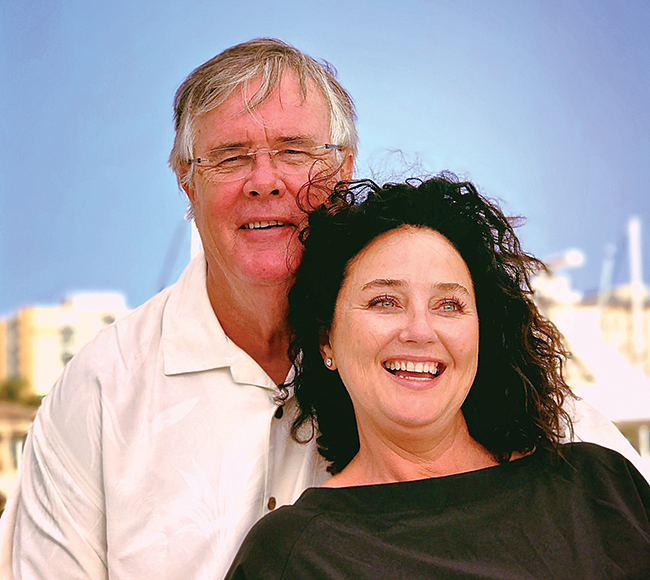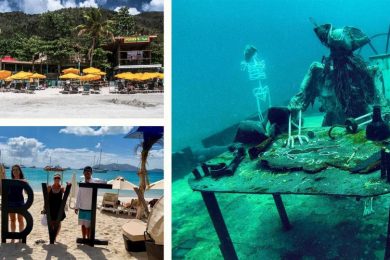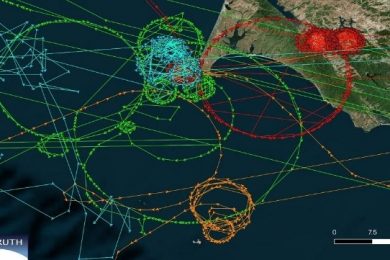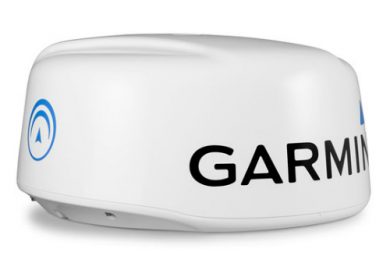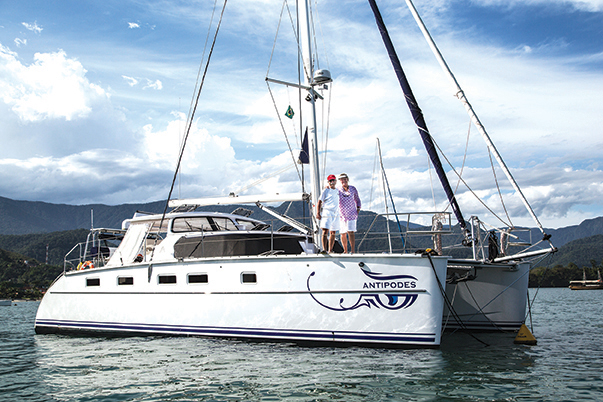What started as one man’s search for adventure and treasure led to discovering the wonders of cruising in South America (published September 2016)
It was the mid-60’s, and at 22 years of age, with little money but big ambitions and a case of gold fever, Charles Cavness and a college friend traveled along abandoned railroads by push car through jungles and banana plantations in Honduras’s hostile landscape to seek out the fabled treasure of Panama City pilfered by Morgan the Pirate.
For anyone who’s even vaguely familiar with Morgan the Pirate, a character emblazoned on rum bottles and synonymous with random acts of silliness, his buccaneering legacy throughout Central America is legendary. But it was more than a hunch that drove Charles on this uncharted adventure.
Charles had finished college and with a friend, bought an old Ford Econoline van to drive from Colorado to Chile on a mountaineering trip. When Montezuma’s revenge got the better of him, he met a man by the name of Purvis, a retired colonel who told fascinating stories about his life, including his involvement in a revolution in Honduras.
“Colonel Tex Lucky Marshall Purvis,” said Charles, imitating the raspy whisper of the Colonel who, through a series of unfortunate events, had his vocal cords severed in a car accident in Mexico. “He couldn’t remember my name, so he called me Colorado. He told me the stories of his life. He was a broken down guy. The story goes that Purvis was sailing up the coast in Central America when he ended up wrecking his boat on an island and was rescued by people who claimed their ancestors went back to the days of Morgan the Pirate. They were allegedly employed to signal ships at the mouth of the harbor for safe passage. They led Purvis down a river to a lagoon where cannons were piled in a hole. Naturally, his first thought was treasure.
While Purvis had tried unsuccessfully to pursue the treasure on three separate occasions, once even making plans to go with long-time friend Huey ‘the Kingfish” Long, the infamous Louisana senator and assassinated presidential hopeful, he never made it. Charles, having pieced the clues together, decided to pursue the treasure hunt.
“We found the lagoon, we found the island, in fact we found canons on the beach, but we didn’t find any holes. Instead, we got arrested and run off by an army officer and two soldiers,” said Charles. “They first thought we were Cubans, but we didn’t speak Spanish very well, so they assumed we were CIA, and then they finally gave up on that and just assumed we were idiots. So they took all our stuff and told us to leave.”

I’m listening to this story aboard Charles and Leslie’s Antares 44i Antipodes in Porto Frade, a few miles south of Rio de Janeiro along Brazil’s Costa Verde. We are literally surrounded by hundreds of islands and beaches dotting the region. A helicopter pad is carved out of the hillside where wealthy Brazilians from Sao Paulo zip in to spend the weekends aboard their mega yachts.
Charles recently sailed his new catamaran 1,200 nautical miles from the Antares Yachts factory in Buenos Aires, Argentina. Buying a boat in Argentina seemed fitting for Charles, who years earlier was prospecting for treasure, drilling hundreds of holes in hopes of striking black gold. While he may not have found the oil he was looking for, he did find a different sort of fortune, an opportunity to sail this unique cruising ground steeped in the cultural and historical setting of South America in an area rarely sailed by North American cruisers. His decision to buy an Antares meant that he could start his journey in the Southern Hemisphere cruising in what is certainly one of the world’s ultimate liveaboard yachts.
CRUISING THE BRAZILIAN COAST

With short sailing distances between destinations, the whole region spanning the coast of the state of Rio de Janeiro as far south as Santos near Sao Paulo, is an ideal cruising ground. We sail to some of the secluded anchorages skirting Ilha Grande, the 75 square mile island with pristine beaches, protected harbors and the small, vehicle-free town of Abraão—the urban centre of the island with a population of only 3,000.
As we approach, the clouds steadily roll in from behind the mountains, cloaking the mountain peaks. A pterodactyl flying from behind the rainforest wouldn’t have been out of place in this environment of rock, water and lush vegetation. Clearly we are the only foreign registered boat around —the rest of the boats belong to local fishermen, or are boats that taxi tourists from Angra dos Reis to Abraão.

We anchor in front of Abraão just in time to see the boatloads of Brazilian tourists stream into town to enjoy the laid-back vibe, explore the surrounding hills renowned for their biodiversity, and by the steady crescendo of music and laughter, an excessive amount of alcohol.
While by no means connoisseurs, we sample some of the local cachaça, which on its own tastes like Appalachian moonshine, at one of the beachfront restaurants. Unlike rum, which is made from sugarcane byproducts, cachaça is the national liquor of Brazil made from fermented and distilled sugarcane juice. Add enough limes, sugar and ice, and it makes a refreshing drink called caipirinha.
EXPLORING PARATY

A little further west of Ilha Grande, we explore the UNESCO World Heritage town of Paraty. The cobbled-stone streets, impressive colonial buildings and colorful wooden tour boats lining the harbor is a tribute to Paraty’s one-time title as the exclusive port for gold coming down from the mountains along the Caminho do Ouro trail and loaded onto ships bound for Portugal.
With the pirates lurking around the many hidden coves, ambushing the ships must have been as easy as taking candy from a baby. By the late 18th century, a new land route had to be established—and Paraty’s golden days quickly faded. Today the town mostly attracts tourists who roam the car-free streets of the historic district. The fact that we are in a one-time gold town isn’t lost to me.
Charles has long abandoned his search for the lost treasure of Panama City, but he continues to pursue adventures with the same feverish zeal. Just months earlier, he was ski touring in Antarctica in what he describes as one of the most hostile places on earth. Sailing from Ushuaia, Argentina aboard a Russian icebreaker, Charles skied in one of the most strenuous areas in the world. The list of adventures is really astonishing, but Charles doesn’t tell these stories to impress, but rather to entertain, understating his accomplishments and ready to embrace the next quest.

By late afternoon, with a full moon on the rise and an exceptionally high tide, the seawater floods the streets through an opening in the seawall that separates the city from the harbor. While the local merchants patiently wait for the water to recede, kids gleefully wade in the knee high water. Makeshift footbridges span the streets for pedestrians, but the harbor where canons line the seawall is completely flooded, leaving the tour boat operators stranded aboard their boats and looking exceptionally bored.
The engineered seawall was built specifically to wash the streets, carrying raw sewage and other rubbish into the harbor. Fortunately, the locals no longer empty their chamber pots out the window.
For Charles, competing in the Hobie Cat World Championships in Tahiti in 1974, even meeting Jimmy Buffett, may have been the beginning of his sailing adventures. Forty one years later, he’s sailing the South Atlantic aboard his own boat in pursuit of another treasure, a new adventure.
As for me, I fly back to Atlanta with my mind reeling with stories about Colonel Tex Lucky Marshall Purvis and I have little doubt that there is gold to be discovered under the centuries-high piles of sewage in Paraty. I am certain that I might be coming down with a case of gold fever.

Salwa Farah is a writer and photographer who has sailed many offshore miles.
